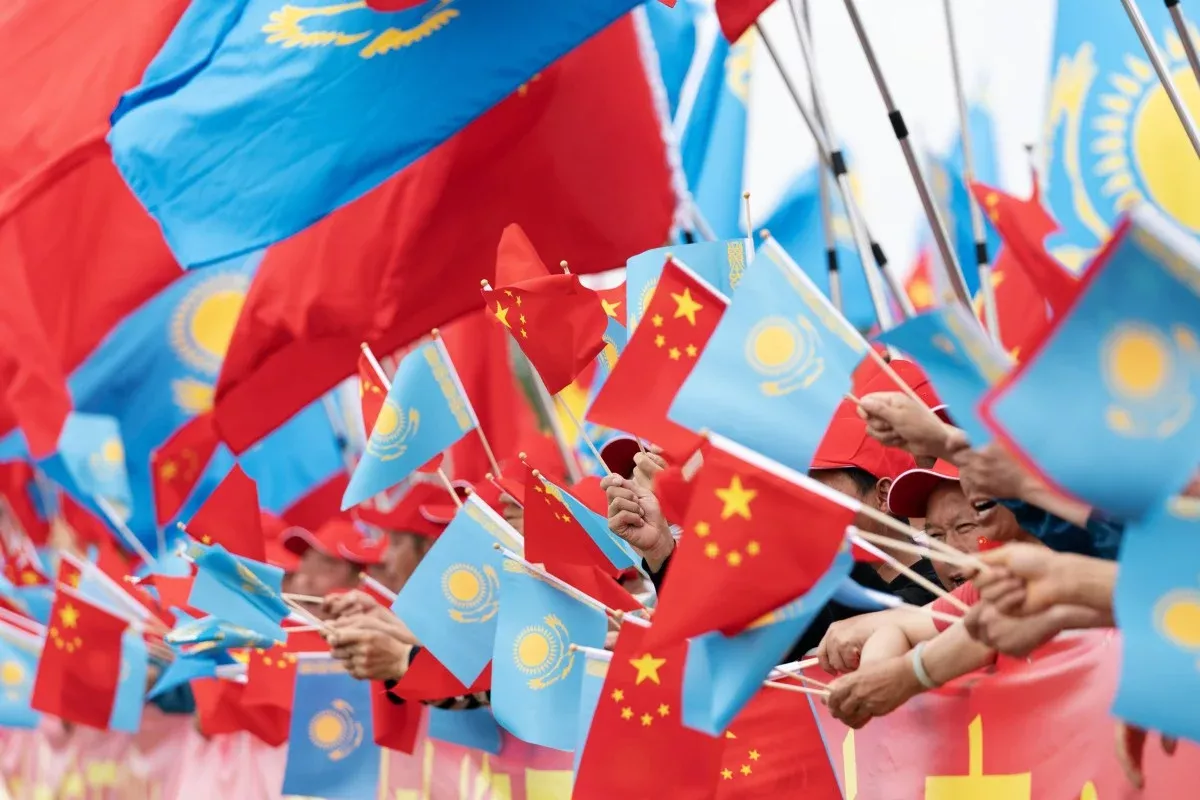
Photo: Xinhua
Cross-border equity and debt deals stand to tap Hong Kong’s deep pools of liquidity if dual-listing becomes a template for investors.
A recent dual-listing at the Astana International Financial Centre (AIFC) in Kazakhstan has been hailed as an “icebreaker” for Kazakh and Chinese issuers who are showing growing interest in pursuing cross-border equity and debt deals, The Caspian Post informs via South China Morning Post.
According to AIFC’s governor Renat Bekturov, the debut of tungsten miner Jiaxin International Resources on both the Hong Kong and Kazakh stock exchanges last month sparked “a lot of interest” from Kazakh and Chinese companies wanting to follow suit.“It was an icebreaker, paving the way for more companies both with Kazakhstani roots and Chinese companies with assets in Kazakhstan,” he said.
“Also, we are seeing interest from Chinese financial companies, [including] brokers and underwriters, in cooperation with potential Kazakhstan issuers - both in areas of equity capital and fixed income - thanks to the huge pool of liquidity in Hong Kong.”
The special economic zone in the Kazakhstan capital has positioned itself as a financial gateway for Chinese investment seeking entry into Central Asian and Eurasian markets amid Beijing’s expanding Belt and Road Initiative.Currently, the AIFC hosts 889 Chinese enterprises primarily in the sectors of wholesale and retail trade, finance and insurance, information and communication technology, mining, manufacturing and construction.
Bekturov said the AIFC’s financing tools and investment structures could help attract Chinese investors wanting to tap into the infrastructure, energy and technology sectors in Kazakhstan.
The financial centre applies English common law and international arbitration in its courts to ensure clear, predictable, and efficient dispute resolution.
The Astana International Exchange (AIX), meanwhile, was the first stock exchange in Central Asia to offer “market-oriented, diversified, localised and sustainable financing solutions to support the [Belt and Road Initiative]”, he added.
Kazakhstan was the primary destination for Chinese capital out of the 150 member countries of China’s global infrastructure initiative, with US$23 billion invested there over the first six months of 2025, data by the research organisation China-Global South Project showed.
These projects increasingly focused on green development, digital transformation and trade-corridor connectivity, according to HSBC research.
“One powerful avenue is the creation of sector-focused investment funds, including infrastructure or green-energy funds, that can be listed and domiciled in the AIFC,” Bekturov said.
Investors stood to benefit from the issuance of yuan-denominated instruments on the AIX, which helps reduce currency risk for Chinese stakeholders while advancing China’s goal of internationalising its currency, he added.
He highlighted notable deals such as the China Construction Bank’s dual-listed yuan-denominated bonds in 2020 and the recent landmark debut of Jiaxin International Resources on both the Hong Kong and Astana stock exchanges.
Jiaxin’s listing was the first yuan-denominated stock on the AIX Belt and Road market as well as the first yuan-denominated equity offering in Central Asia.
The Belt and Road Market Segment at the Astana International Exchange (AIX) is designed to finance Belt and Road Initiative projects and act as an exit platform to attract more private equity investment.
It uses the yuan as its preferred currency and offers a variety of instruments for listing and trading, including common shares, bonds, asset-backed securities, and depositary receipts.
For technology investments, the AIFC could customise venture capital and private equity fund structures to attract Chinese tech firms and investors keen to tap into Central Asia’s rapidly growing digital economy, according to Bekturov.
The AIFC is also enhancing its fintech regulatory and innovation framework to support responsible growth in digital finance.
In June, the AIFC regulator granted its first fiat-backed stablecoin licence to AnchorX.KZ, which plans to issue a stablecoin pegged to the offshore yuan to facilitate cross-border payments between Chinese companies offshore and belt and road trading partners.
Bekturov noted that Hong Kong’s role as the largest yuan hub could be leveraged to expand yuan-denominated products and settlement systems within the AIFC.
“This promotes cross-border trade and investment flows, reduces currency risks for Chinese and Asian investors, and strengthens the AIFC’s role as a bridge between China and Central Asia,” he said.
Share on social media